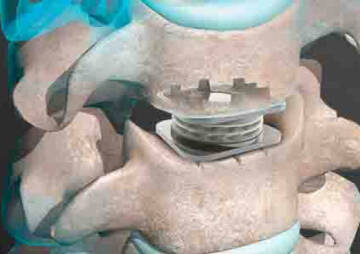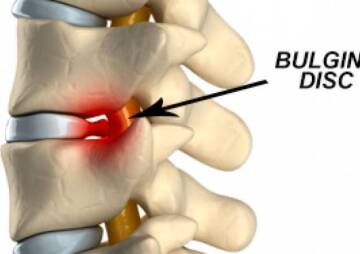-
فئة
Craniomaxillofacial Surgery
Orthopedic Surgery
Spine Surgery
Orthopedic Implants
Hip Surgery
Knee Surgery
Pectus Excavatum
Bone Graft
Disinfectants
Healthcare
Facts about Spinal Surgery: When Is It Necessary?

While people think spine surgery is the best way to relieve the back pain, there are many other non-surgical options before undergoing spinal surgery.
Ever heard of spinal surgery? Wondered why this surgery is done? One common pain people face nowadays is the back pain - the most chronic common type of pain. While people think spine surgery is the best way to relieve the back pain, there are many other non-surgical options before undergoing spinal surgery.
First and foremost, it is important to discuss the issue and the pain with the respective specialist and find the best treatment.
Some treatments that doctors suggest before spinal surgery are the use of ice and heat, spinal injections, and regular exercise and medicines such as ibuprofen. For pain management the doctor may even suggest epidural steroid injection, spinal cord stimulation, botox injection, joint injection, and radiofrequency treatment. But when is the spinal surgery necessary?
When is it necessary to undergo the spinal surgery?
After viewing the results of the MRI or other tests, the doctor might refer the patient to undergo the spinal surgery, in case of the following issues:
- If there is a herniated disk that is not healing without surgery.
- Bone spurs which are on the spine, caused by arthritis, and are putting pressure on the patient’s spinal cord.
- Certain weakness and numbness in the legs and arms.
- Having trouble in walking or while using hands.
- A bone in the back which is broken or dislocated.
- A tumor that is on the spinal cord.
- Lost bowel or bladder control due to the problem with nerves in the back.
The two main factors that proved to be effective for a patient suffering from back pain and problems with spine are time and surgery. In some cases, spinal implants take place as well during the surgery. Most spinal cases and conditions do not require surgery, but when the time comes, surgery plays a major and important role. Hence, implants come to use.
The implants help in correcting fusions and deformities, and strengthening the spine. Other conditions that require instrumented fusion are slippage of the spine, disc disease, traumatic fractures, and scoliosis.
Most and major spinal implants are made of metals that are titanium, titanium-alloy, or stainless steel but there are implants that are made of non-metallic compounds as well. These implants come in different shapes and sizes based on the need and age of the patient.
Types of Spinal Implants
Spinal implants can be categorized under the following groups:
- Rods: Rods are one of the main and original implants used in the spine. Rods are used along with screws and hooks in order to immobilize the spinal levels involved. They are strong but flexible, and can be shaped according to the contours of the patient’s spine.
- Hooks: Hooks are used along with rods and also other implants to grip them to the patient’s vertebrae.
- Pedicle screws: Pedicle screws are specially designed screws that are carefully implanted into the patient’s pedicles of the spinal vertebrae. These rods can be contoured in order to correct the deformities and also to facilitate fusion.
- Plates: In the cervical spines, often plates are used. They are manufactured to suit the contour, which is located in the spine and they are held by screws into the adjacent vertebrae.
There has been a major improvement in the development of the spinal implants in the past 20 years. The implants are utilized to suit the patients. The development will continue to take the field forward in the years to come. Despite all the developments, a spinal surgery is not the first option to take.
Why back surgery should be avoided?
Before going for a back surgery, you should know the risks of spinal surgery and as to why you should avoid back surgery. Compared to other types of surgeries, back surgeries contain higher risks as they are performed closer to the nervous system of the patient. The main serious risks are the risks of infection and paralysis.
No matter how successful the surgery is, the recovery time will be long. Depending on the condition of the patient and the type of surgery they have undergone, the recovery may take up to months. The patient may even permanently lose some flexibility. There is severe post-operation pain. There should be alternative methods to calm and control the pain, other than medicines. Can older people survive all the pain and the long recovery process?
Is there any age limit for undergoing spinal surgery?
Major issues like spinal arthritis, disk degeneration, as well as past surgeries that have failed to align the spine are the main problems for the aged people nowadays. Major spinal surgeries are known to be dangerous and too risky for elderly people. Physical limitations occur because of chronic pain, and result in impaired life quality. Surgeries can better this case and improve the life of the patient, so, age should not be considered as a barrier or contradiction when it comes to spine surgery.
As a study suggests, patients who were over 65 and over 80 benefited from the spine surgery. Up to date, age has been regarded as a contradiction for elective operations, but the more the significance of the surgery, the more the risks it holds. Hence, there is no age limit for spinal surgery and most spinal diseases and issues can be treated successfully with surgery, in any age group.
Back surgeries that failed
10% to 40% of failure occurs in the lumber laminectomy surgeries according to the researchers. Another study showed that 5% to 36% of the patients complained about their leg as well as back pain return 2 years, post-surgery. The aging population is growing and with this, the number of surgeries related to the spine is increasing too. Between the years 1998 and 2008, the lumbar rate increased by 170.9%, and during the same period the rate of laminectomy increased by 11.3%. Surgeries do not always deliver the result we expect especially when we take a look at the recurrent rate of surgeries. The chances of success drop after each and every spine surgery the patient undergoes:
- After the first surgery there was a 50% success rate
- After the second surgery, 30% success rate
- After the third surgery, 15%
- And after the fourth surgery, only a 5% success rate was seen.
Conclusively, after the failed back surgeries, another surgery is not always the answer, and the doctor should find solutions to solve the issue through non-surgical therapies.
The article contained detailed knowledge about spinal surgery, whether it is necessary or not, and the risks that it contains. Further details can be accessed on Health News Center’s Health website.
References : spineuniverse,pennmedicine






